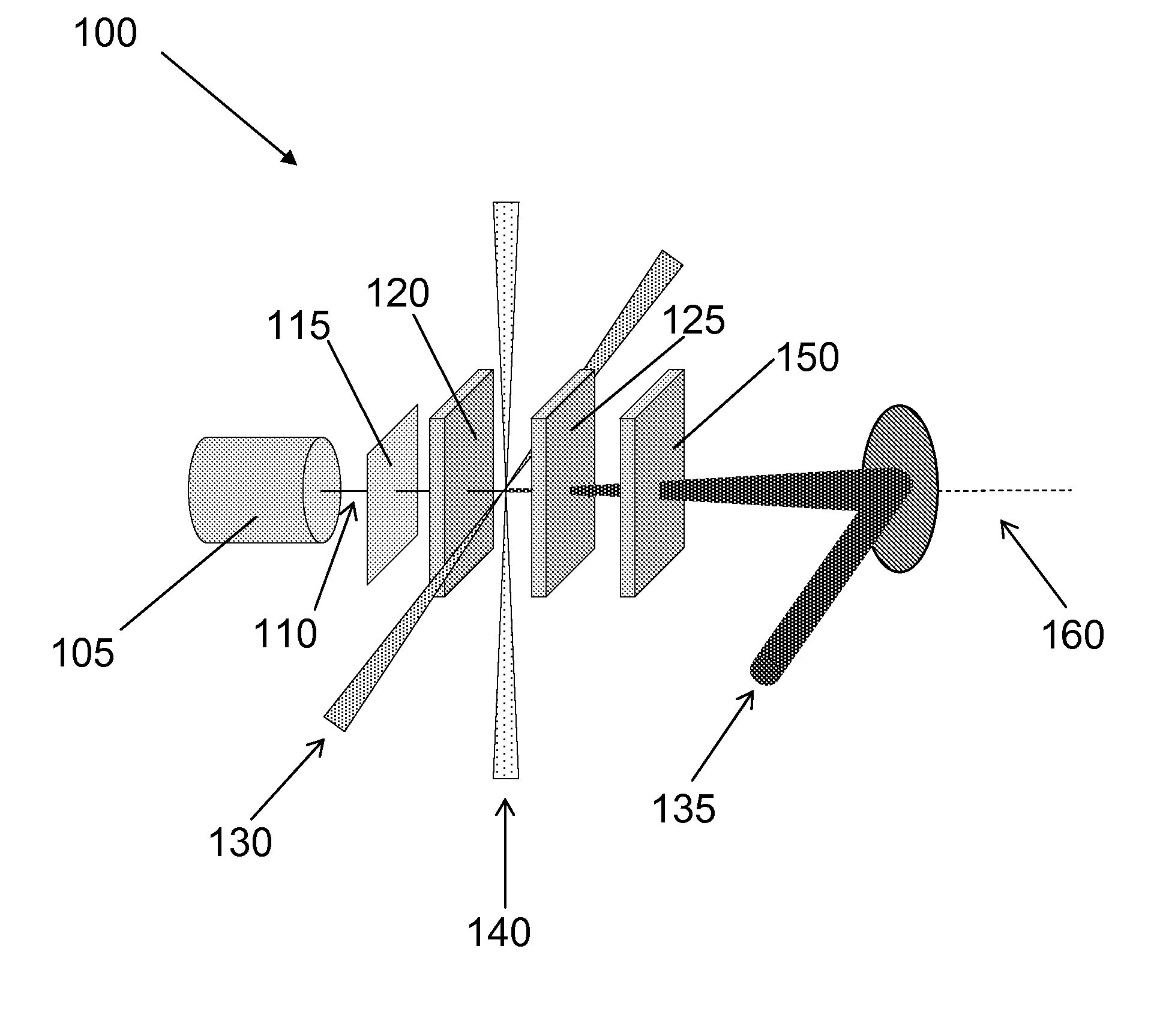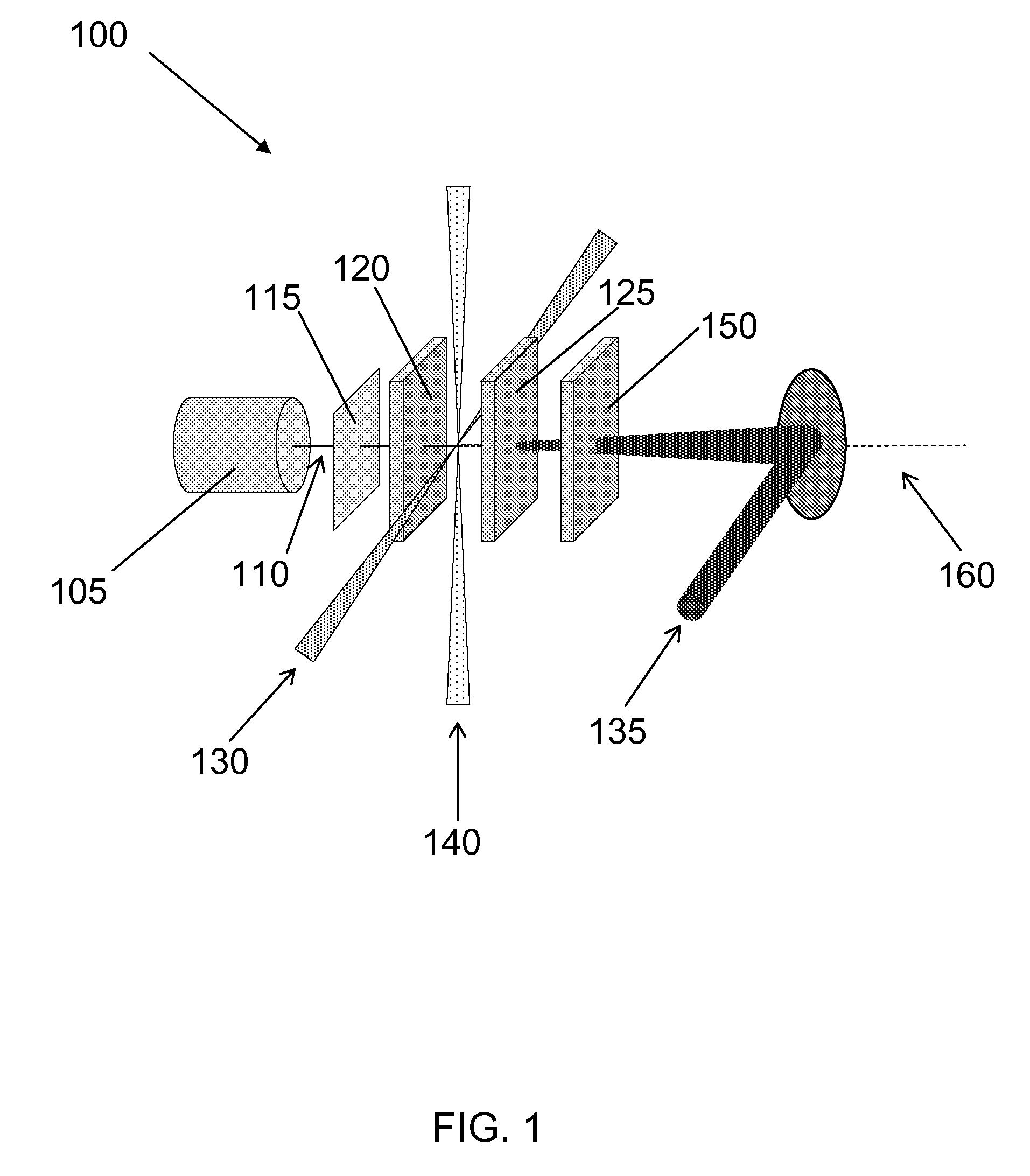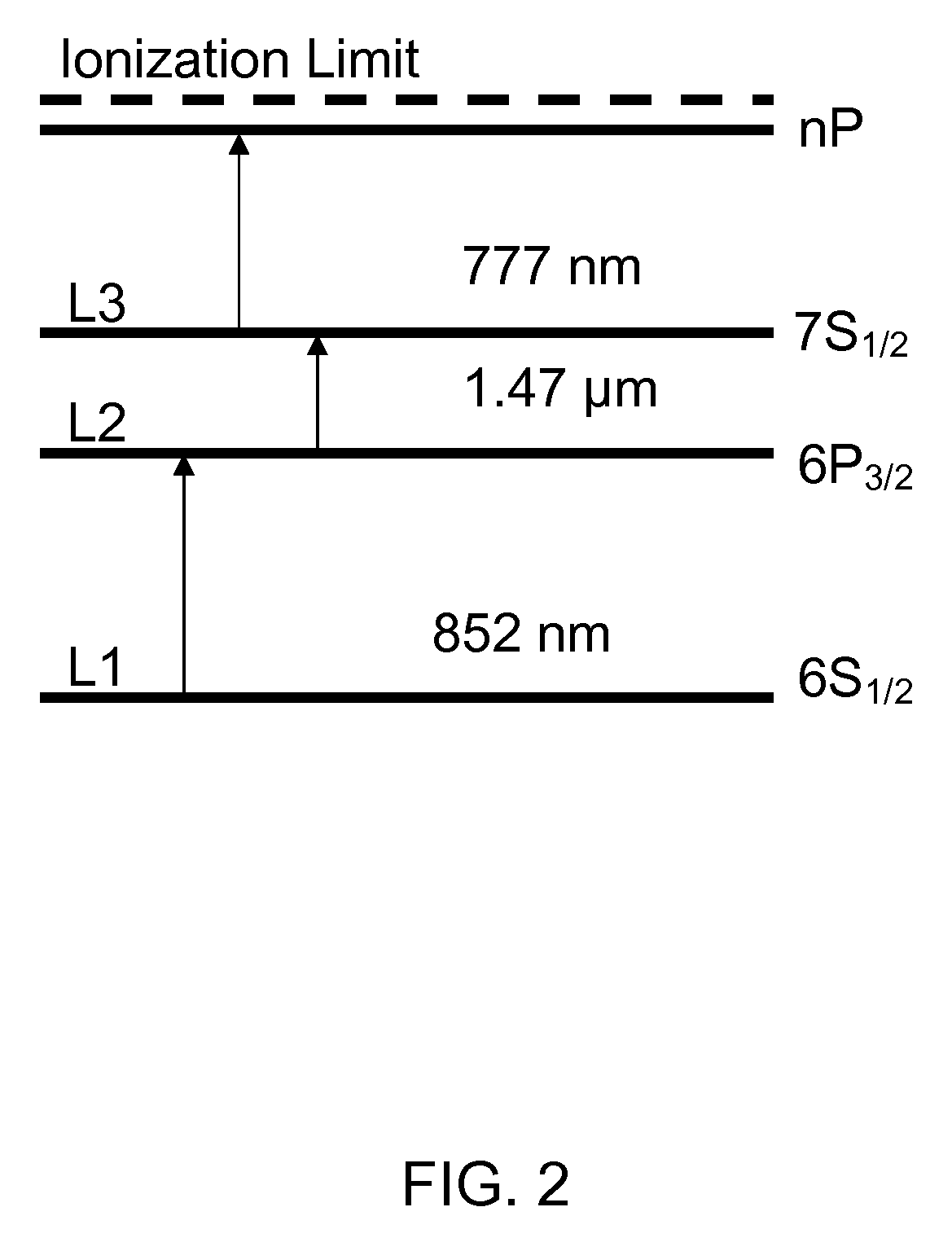Ultra-bright pulsed electron beam with low longitudinal emittance
a pulsed electron beam, ultra-bright technology, applied in the field of ultra-bright pulsed electron beam with low longitudinal emittance, can solve the problems of reducing the brightness of the tip, reducing the availability of electron beam sources,
- Summary
- Abstract
- Description
- Claims
- Application Information
AI Technical Summary
Benefits of technology
Problems solved by technology
Method used
Image
Examples
Embodiment Construction
[0013]A novel scheme for a high-brightness pulsed electron source, which has the potential for many useful applications in electron microscopy, inverse photo-emission, low energy electron scattering experiments, and electron holography is disclosed herein. The source makes use of neutral atoms in an atomic beam. Each cycle of the source begins with a laser pulse that excites a single atom on average to a band of high-lying Rydberg nP states. The resulting valence electron Rydberg wave packet evolves in a nearly classical Kepler orbit. When the electron reaches apogee, an electric field pulse is applied that ionizes the atom and accelerates the electron away from its parent ion. The collection of electron wave packets thus generated in a series of cycles can occupy a phase volume near the quantum limit and it can possess very high brightness. Each wave packet can exhibit a considerable degree of coherence. In one arrangement, the electron energy is in the 10-100 eV range
[0014]The sou...
PUM
 Login to View More
Login to View More Abstract
Description
Claims
Application Information
 Login to View More
Login to View More - R&D
- Intellectual Property
- Life Sciences
- Materials
- Tech Scout
- Unparalleled Data Quality
- Higher Quality Content
- 60% Fewer Hallucinations
Browse by: Latest US Patents, China's latest patents, Technical Efficacy Thesaurus, Application Domain, Technology Topic, Popular Technical Reports.
© 2025 PatSnap. All rights reserved.Legal|Privacy policy|Modern Slavery Act Transparency Statement|Sitemap|About US| Contact US: help@patsnap.com



